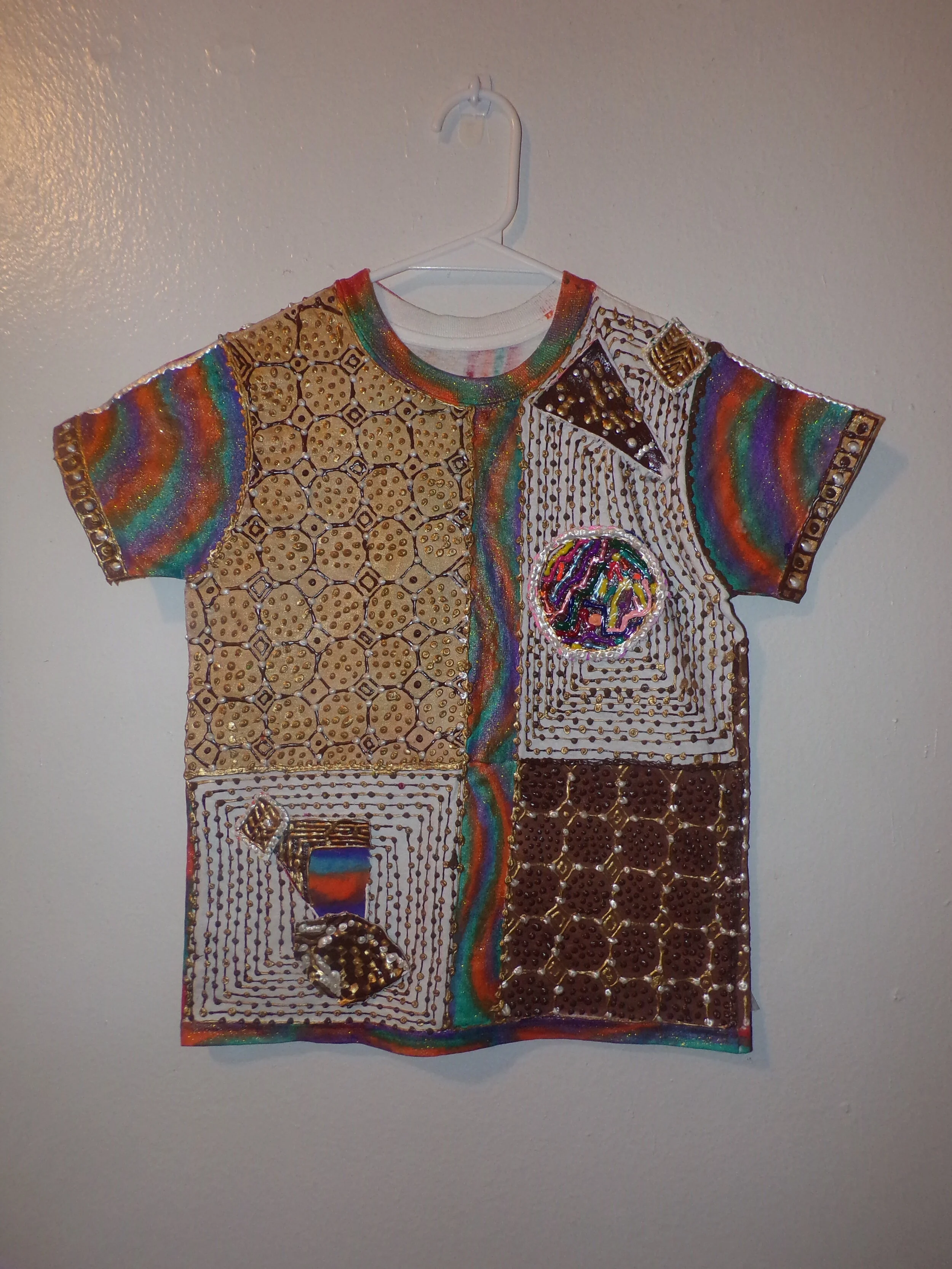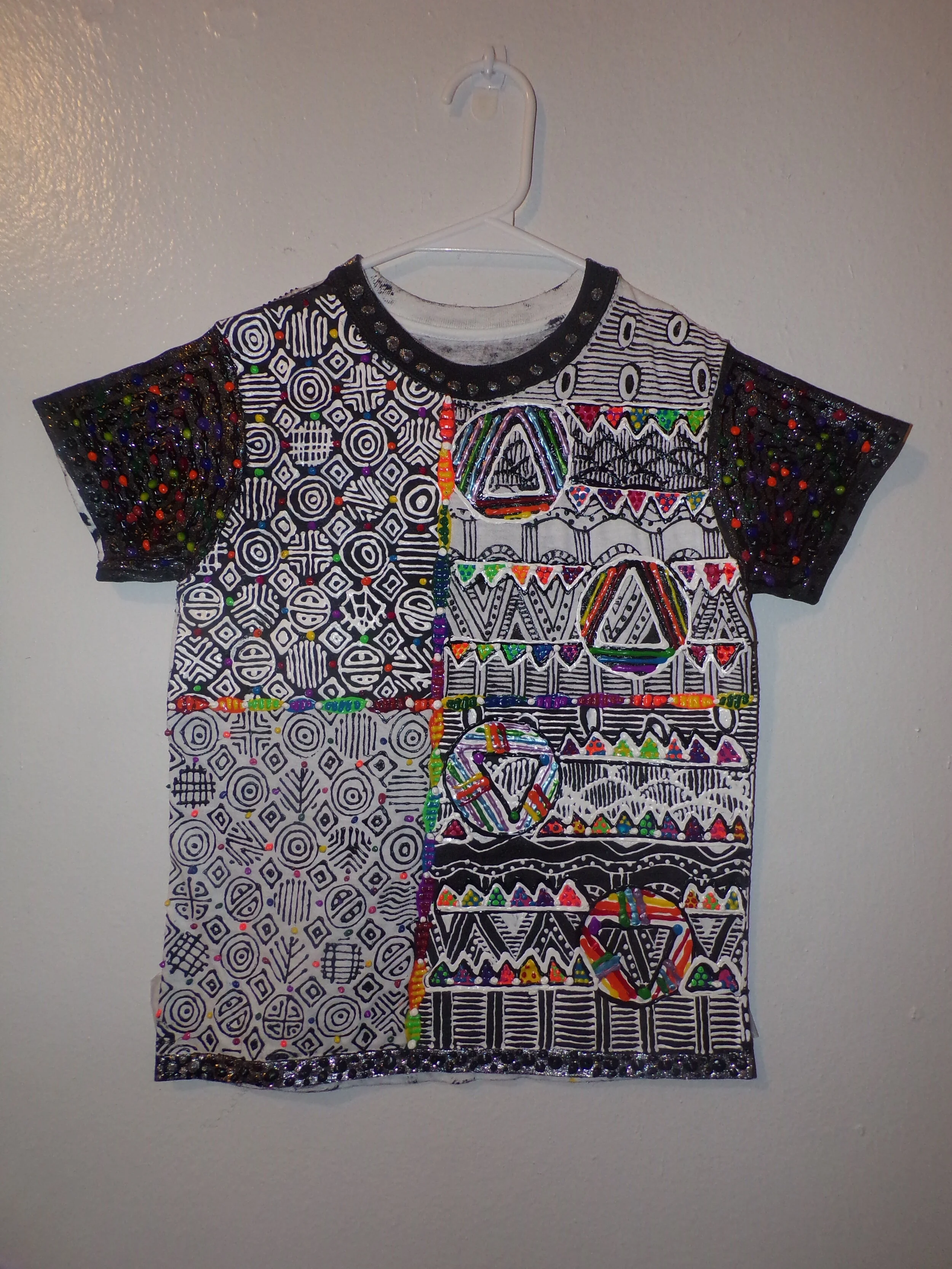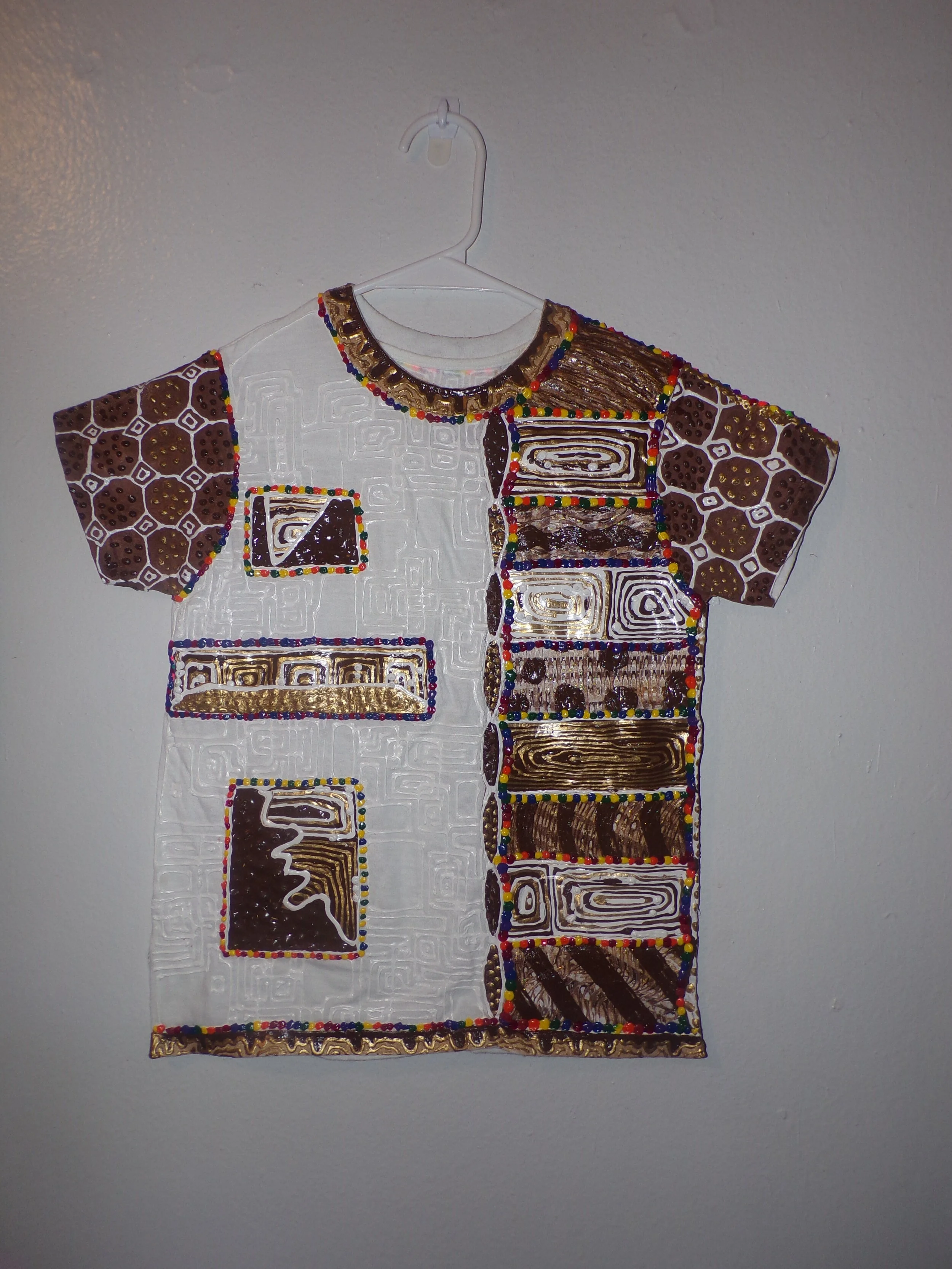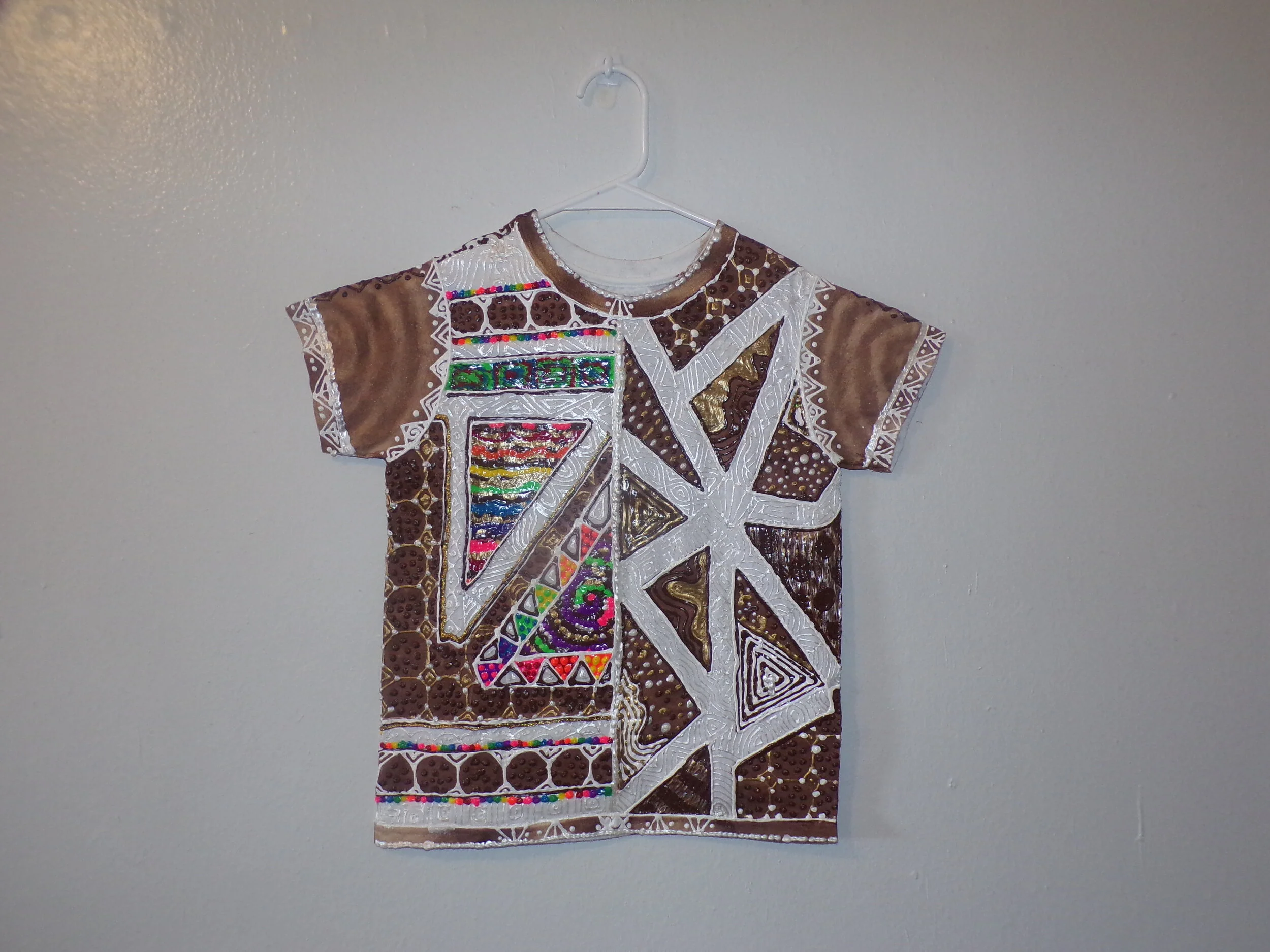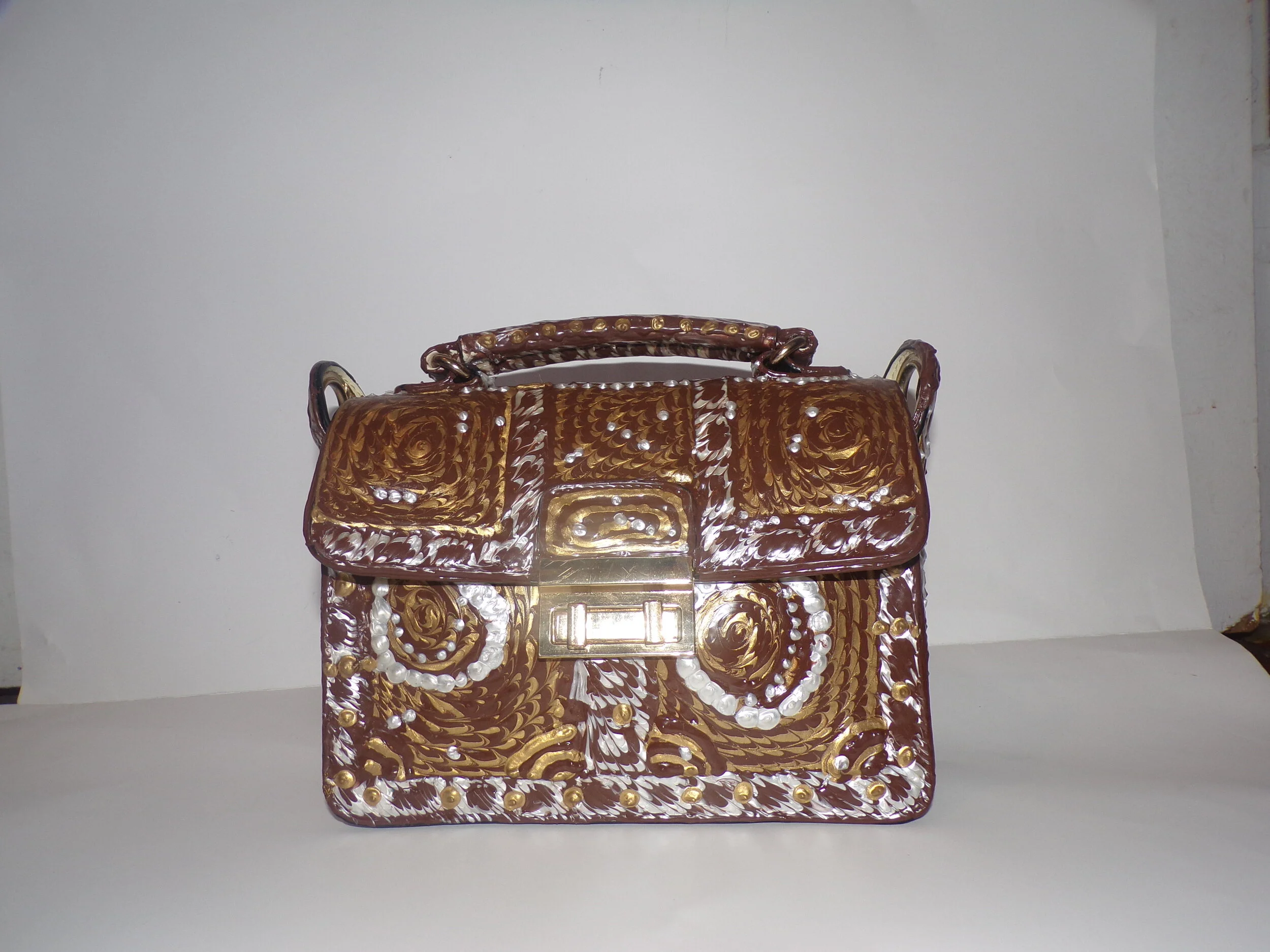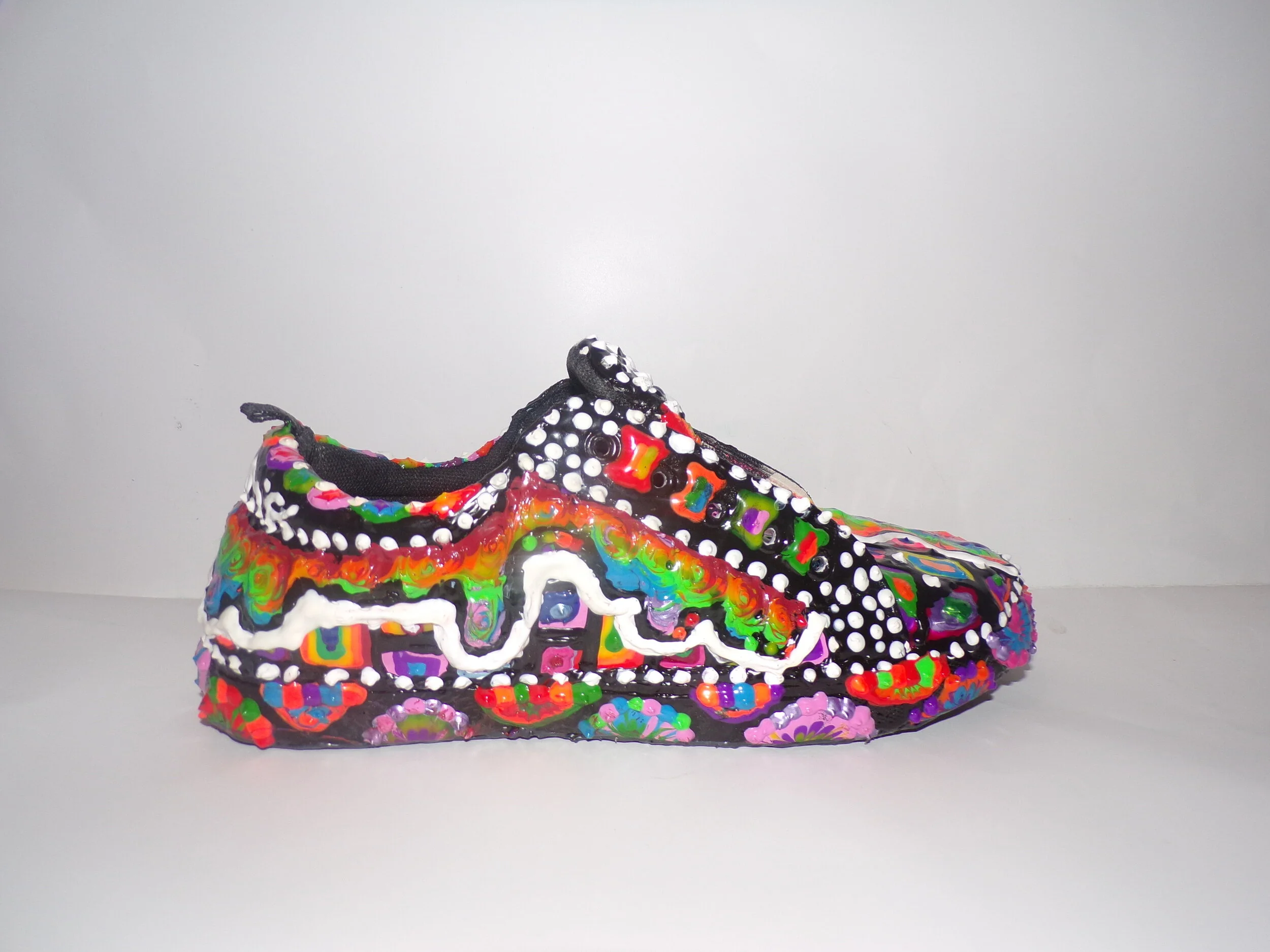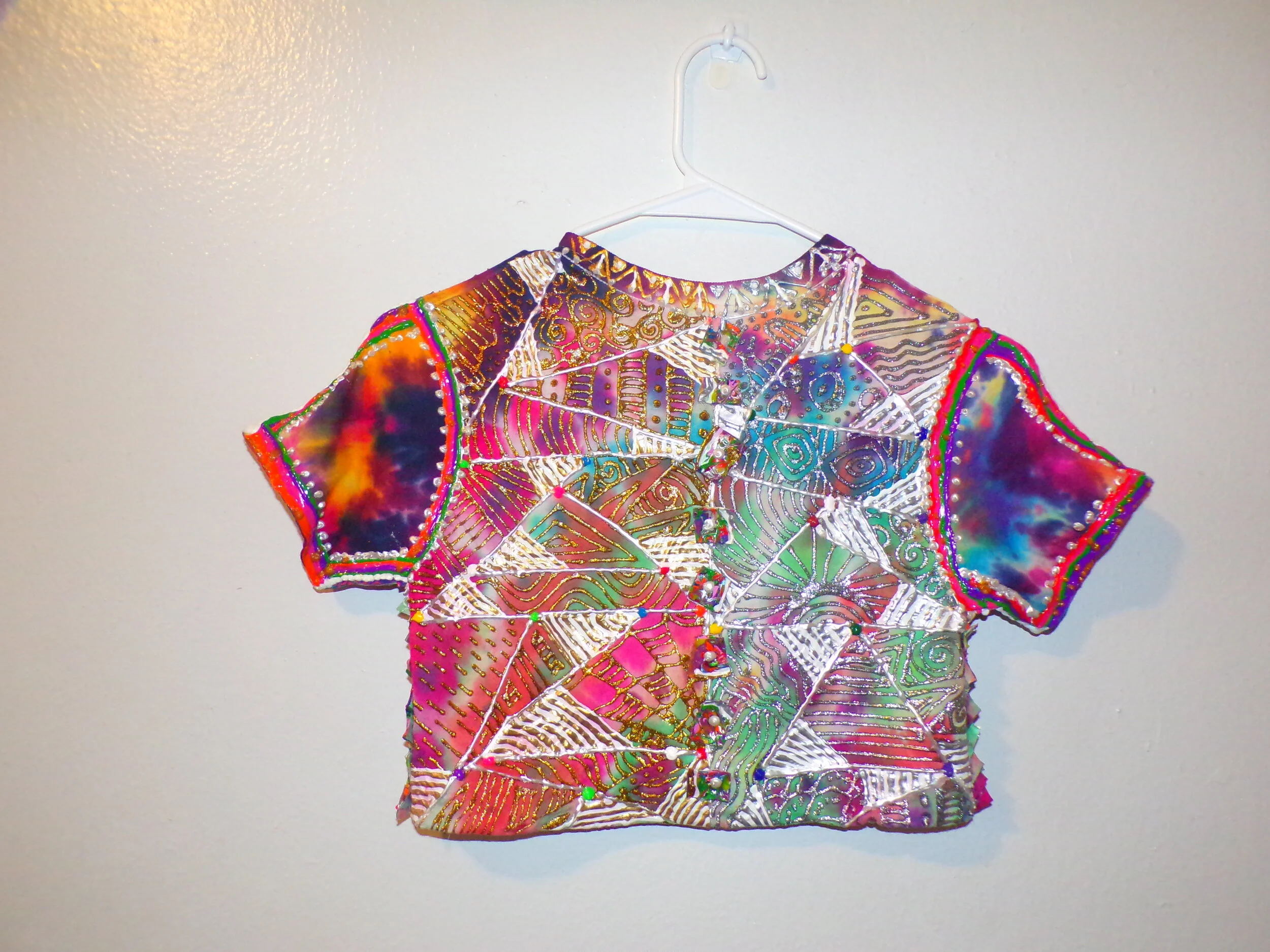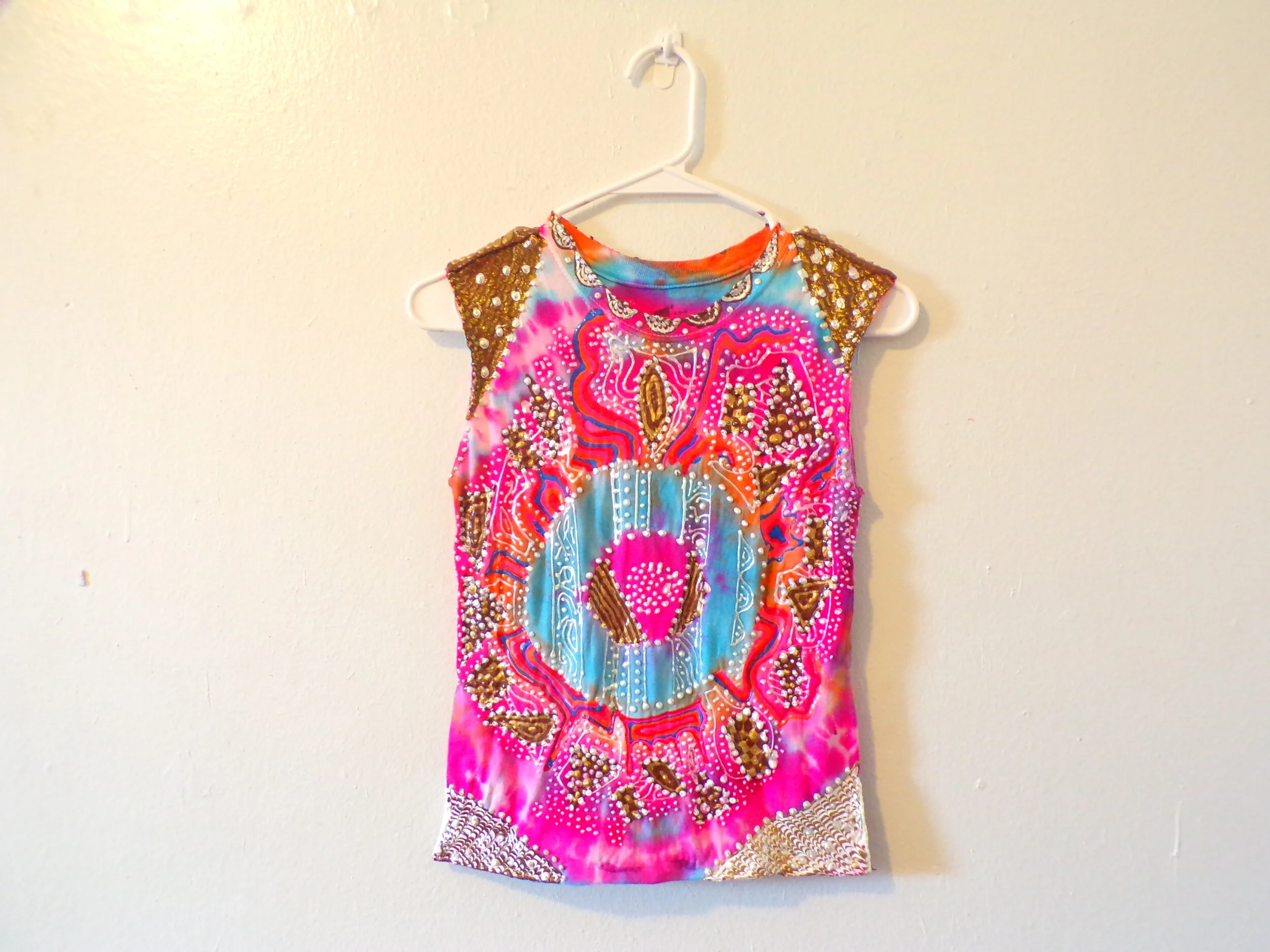Statement:
Patterns
I have been obsessed with patterns for as long as I can remember. I began to take patterns seriously in high school. I was given an assignment which required me to make a one-inch border on a sheet of paper and fill the entire space with patterns. I loved the way the patterns came together, and from that time on, I have been experimenting with patterns. In a biology class project, one of the options was to put either a plant cell or an animal cell on a T-shirt, and I chose that project not because I didn’t need to present on my final project, but more so I could use my growing talent to make the cell look artistic.
Additionally, creating patterns represent self-representation as an outlet for me. As an introvert, I tend to keep to myself, and with patterns and colors I can express myself in a variety of ways without judgement. I am free to be unapologetically me; nothing is holding me back. Creating patterns is also therapeutic for me. For example, I can take out whatever frustrations or anxieties I have on the t-shirt. Problems melt away when I am in my little world where I can escape from the real world for a few hours. At that time, nothing else matters.
Moreover, I always wanted to create pants to go along with my shirts, but I never got the time to do it. This time around, I wanted the shirts and pants to be matching. I also get to re-create pieces that I was not satisfied with. It felt good to redo these pieces because I entered it with a different perspective and understanding. Now my lines are much clearer, and I don't have to cover up anything. Sometimes I feel like the patterns might get repetitive, so I might take inspiration from things around me like the lines in the apartment floor, the patterns on leaves, or my mom’s photo frame. Other times I come up with something original when I am daydreaming, or from upgrading my previous artwork.
Two artists who inspired some of my pieces are Bridget Riley and Yayoi Kusama. Riley was born in Norwood, London. She initially painted figural subjects in a semi- impressionist manner, and then moved onto pointillism producing mainly landscapes. In 1960, she evolved a style that explored the dynamic potentialities of optical phenomena. For example, if you look at one of Riley’s most famous works, Fall, 1963, from top to bottom it looks like the pattern is moving. It is my goal to create pieces similar to that of Riley’s. The illusion of a moving painting inspired me. Yayoi Kusama is a Japanese artist who also makes different types of art - performances, installations, and paintings that contain dots. She noted the inspirations came to her through hallucinations, which caused her to freak out. She was in a field of flowers and they started talking to her. She described the heads of the flowers as dots that went on for as far as she could see and felt like she was disappearing into the field of endless dots. I am intrigued that she uses vibrant colors in her work. Her art is bold, it is unique, and it is beautiful. It is quite fascinating that even though her art consists primarily of dots, they all communicate with each other in the same way that they communicated with her during her hallucination. Similar to Kusama, I strive for all of my work to communicate with each other.
Artist : Ariel Burke Title: Brown and Gold I Date: Jan 9th 2021-Jan 16th 2021 Dimensions: Size Varies Materials: Fabric Paint
Artist: Ariel Burke Title: Brown and Gold II Date: Jan 12th 2021- Feb 9th 2021 Dimensions: Size Varies Materials: Fabric Paint
Artist: Ariel Burke Title: Black and White I Date: Jan 17th 2021- Feb 9th 2021 Dimensions: Size Varies Materials: Fabric Paint
Artist: Ariel Burke Title: Brown and Gold III Date: Feb 2nd 2021- Feb 8th 2021 Dimensions: Size Varies Materials: Fabric Paint
Artist: Ariel Burke Title: Black and White II Date : Jan 21st 2021- Apr 1st 2021 Dimensions: Size varies Materials: Fabric Paint
Artist: Ariel Burke Title: Brown and Gold IV Date: Feb 23rd 2021- Mar 12 2021 Dimensions: Size varies Materials: Fabric Paint
Artist: Ariel Burke Title: Brown and Gold V Date: Mar 23rd 2021-Apr 6th 2021 Dimensions: Size Varies Materials:: Fabric Paint
Artist: Ariel Burke Title: Black and White III Date: Apr 9th 2021- May 4th 2021 Dimensions: Size Varies Materials: Fabric Paint
Artist : Ariel Burke Title: White, Silver and Gold I Date: April 29th 2021-11th May 2021 Dimensions: Size Varies Materials: Tie Dye, Fabric paint
Artist : Ariel Burke Title: Brown and Gold VI Date: Apr 29th 2021- May 11th 2021 Dimensions: Size Varies Materials, Tie dye & Fabric Paint


